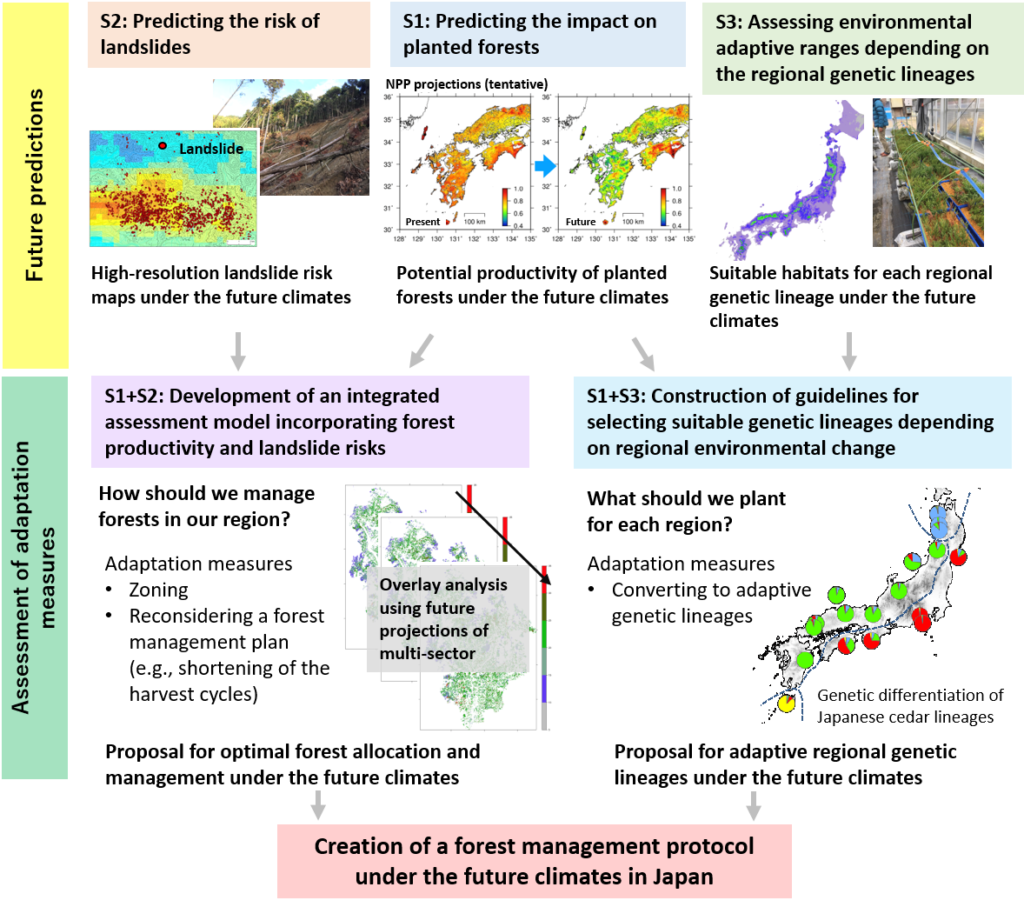Sub-theme leader
Yasumasa Hirata (Forest Research and Management Organization)
Outline
The impacts of climate change have become apparent in the agriculture, forestry, and fisheries sectors in Japan. In forestry sectors, it is expected that drought, which will be caused by temperature rise and changes in rainfall patterns under future climates, may reduce productivity in planted forests and increase mortality of planted trees in some regions. Additionally, there is concern that an increase in extremely heavy rainfall events such as large typhoons may entail severe soil erosion and landslides in forested areas.
The objectives of the present research are to predict the impacts of climate change on forestry in Japan and to propose an adaptive forest management protocol under future climates. To achieve this, we are working on (1) the improvement of models that can predict the impacts of climate change on productivity in planted forests, (2) the development of a model for evaluating landslide risks in forested areas, and (3) the assessment of environmental adaptive ranges depending on the regional genetic lineage of planted trees. Based on these models, we will develop an integrated model that can assess adaptation measures for forestry, such as zoning and a harvest period at a regional scale. Moreover, we will construct guidelines for selecting suitable genetic lineages depending on regional environmental changes at the national scale. Finally, we will propose optimal forest allocation and management as well as adaptive regional genetic lineages under future climates.

Goals
- Development of an assessment model incorporating forest productivity and landslide risks for regional forest management planning
- Construction of guidelines for selecting suitable genetic lineages depending on regional environments under future climates
- Proposal for an adaptive forest management protocol under future climates
Target items
- Improvement of statistical and process models that can predict productivity in planted forests (e.g., Japanese cedar Sugi plantations) at regional and national scales
- Development of a model for high-resolution mapping of landslide risks at regional scales
- Evaluation of environmental adaptive ranges depending on each regional genetic lineage of planted tree species (e.g., Sugi)
- Assessment of adaptation measures for forestry (e.g., allocation and management)
- Development of an integrated assessment model by using an overlay analysis based on future multisector projections (e.g., productivity, landslide risk, and genetic lineage)
- Proposal for management guidelines and optimal landscape designs under future climates
Adaptation options
- Optimal allocation of forest types (e.g., natural, secondary, and planted forests) under future climates
- Selection of suitable sites and regional genetic lineages under future climates
